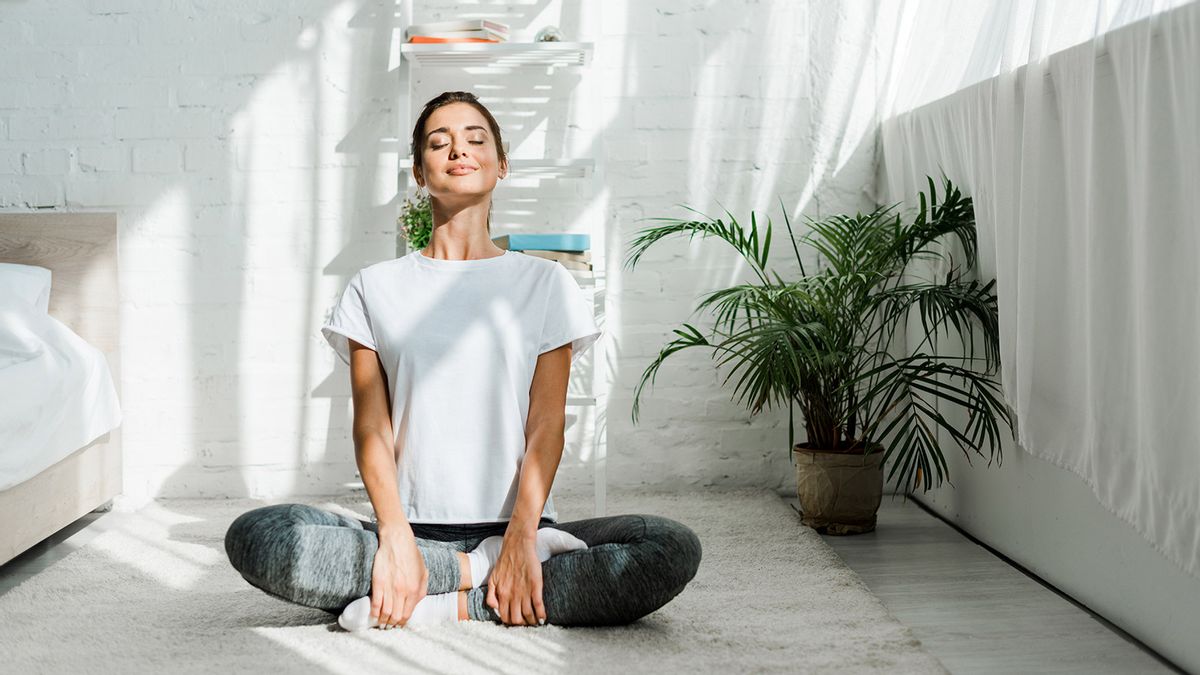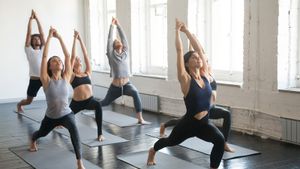Happiness is a state of mind. Defined by positive emotions, often, it can be an elusive one. Whether it’s an impending health crisis, work pressure or the overwhelming work-from-home (WFH) scenario in the new normal that we are dealing with, the bottom line? We all feel down in the dumps surrounded by negative thoughts one day or the other. It’s in those moments that we need some extra help.
Enter yoga. Research studies have linked the practice of this ancient form of exercise to physical, mental and emotional relaxation. It is associated with increased levels of gamma-aminobutyric acid (GABA) in the brain, a chemical that helps regulate nerve activity. Yoga postures (asanas), breathing exercises (pranayama) and meditation help release tension and make you feel calm, relaxed and happy from within.
While you scour the internet for your next Netflix binge or funny memes, we got celebrity yoga expert Samiksha Shetty, who is trainer to the likes of Bollywood actors Mandana Karimi and Kajal Aggarwal, to share with us five yoga asanas to cheer you up.
Adho mukha svanasana (Downward-facing dog)

One of the most popular yoga asanas, adho mukha svanasana offers the ultimate stretch and rejuvenates our body. It strengthens our arms and shoulders, lengthens the spine, calves and hamstrings, and energises the entire body by bringing blood flow to our brain. This pose is usually practiced after a strenuous yoga practice, especially back extensions since it helps neutralise the effects of previous asanas on the body. People with any kind of wrist injury are advised to avoid this pose since adho mukha svanasana practice puts pressure on the wrist.
How to do adho mukha svanasana:
1. Place your hands and knees onto the floor. Lift your knees from the floor to straighten them and push your heels down as far as they can go.
2. Extend the spine by pushing away from the ground using your palms.
3. Stay there for five to nine breaths, then slowly bend your knees to the floor.
Ushtrasana (Camel pose)
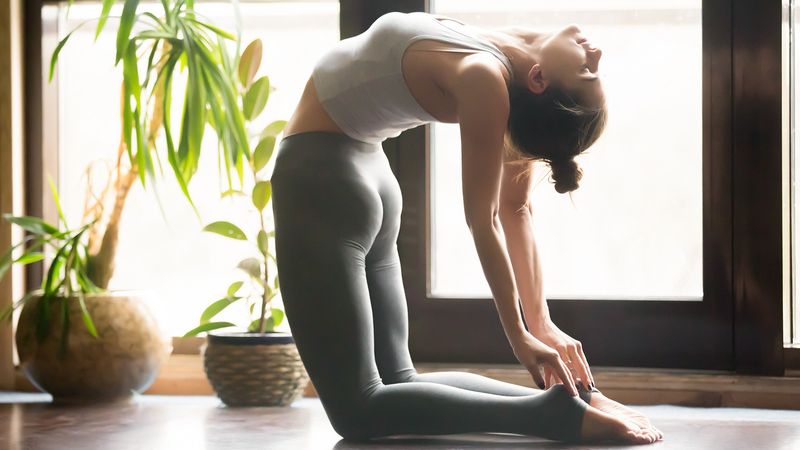
Your spine literally holds your entire body upright, is part of the central nervous system (CNS) and is responsible for all bodily functions. Here is where all repressed anger and stress is held. To relieve this stress, you need ushtrasana aka camel pose. Ushtrasana is a natural way to stimulate our nervous system and energise our body and mind.
Backbends in ushtrasana restore the natural flexibility of the spine and also work on the heart chakra (anahata) as it stretches the chest muscles and leaves you feeling energised. This yoga pose is recommended for people dealing with anxiety, poor sitting postures and hypertension.
How to do ushtrasana:
1. Begin by kneeling down on the mat with your legs hip-width apart.
2. Place your hands on your hips, with your thumbs at the base of your spine.
3. Press your shins and the top of your feet into the mat. For an easier version, you can tuck your toes under.
4. Inhale and lift your chest and slowly start to bring your torso back.
5. From here, bring your right hand to rest on your right heel and your left hand to rest on your left heel.
6. Keep your head in a relatively neutral position, so as to not strain your neck. Hold for 30 seconds.
Baddhakonasana (Butterfly Pose)
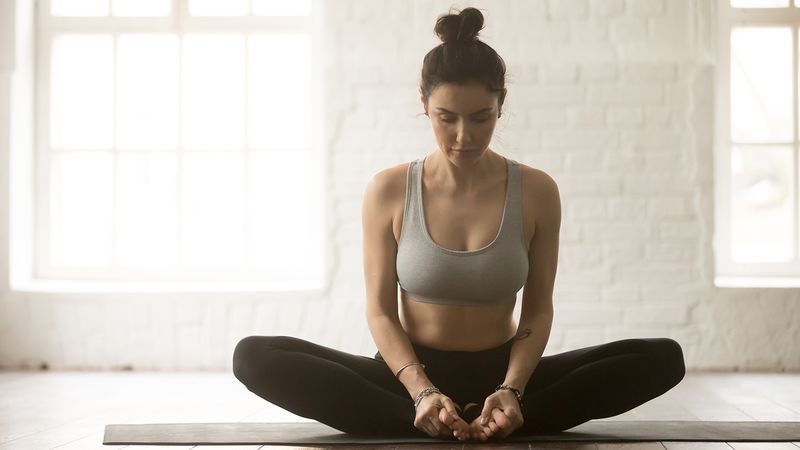
Baddhakonasana, which is also known as the bound angle or butterfly pose, is known as a grounding yoga pose. According to Shetty, hips store pent up emotions of fear and worry, which don’t let you move forward, giving you a feeling of being stuck and trapped. The butterfly pose helps nourish the hips and ensures a good emotional release. Baddhakonasana also relieves stiffness in the ankles, knees and hips and improves hip mobility.
How to do baddhakonasana:
There are two variations of this yoga pose.
Variation 1:
1. Sit on the floor with your legs stretched out straight in front of you and spine erect.
2. Now, bring the soles of your feet together bending both your knees out to the side.
3. Place your feet in front of your pelvis, around a fist distance from your groin.
4. Now take deep breaths and press your thighs and knees down towards the floor providing gentle pressure.
5. In a slow and controlled motion begin to flap both your legs from the hip like the wings of a butterfly for around 60 seconds and then release.
Variation 2:
1. Once you come into position with your feet pressed together.
2. Hold your feet with your hands and open your feet like a book towards the ceiling.
3. Take a deep inhale and on your exhale, bend forward bringing your chin or forehead towards the mat.
4. Hold for 30 to 60 seconds and then on the next inhale come back up.
Ananda Balasana (Happy Child’s Pose)
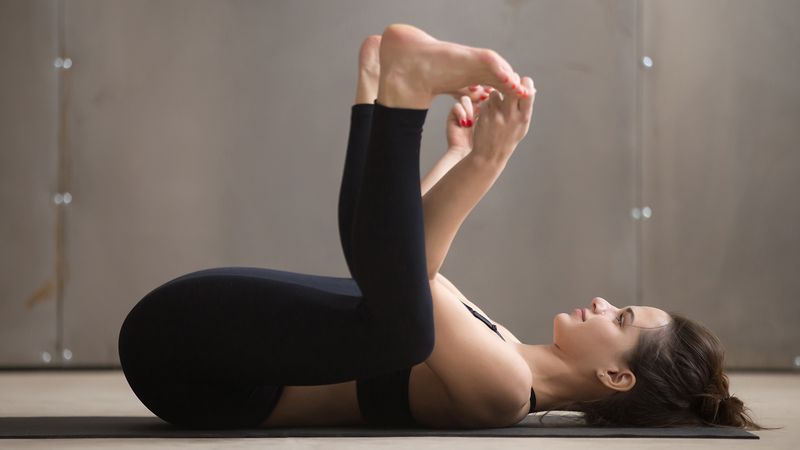
As adults, we often find it difficult to experience unadulterated happiness like we did as kids, and find joy in simpler things. But again, we know it is critical to tune out once in a while and clear our heads. According to Shetty, the Ananda balasana aka happy child’s pose is the closest you can get to such happiness. This asana lengthens and stretches out our spine while simultaneously stretching out our hips. This alleviates fatigue and moves the mind in a playful mode which is prerequisite to stop resisting all that’s holding us back.
How to do Ananda balasana:
1. Lie down on your back with your knees bent into your belly.
2. Grab your feet with your hands and keep your knees slightly wider than your torso.
3. Your ankles should be directly above your knees.
4. Now gently pull your hands down and simultaneously push your feet up to create resistance.
5. Stay here for nine to 12 breaths.
Shavasana (Corpse pose)
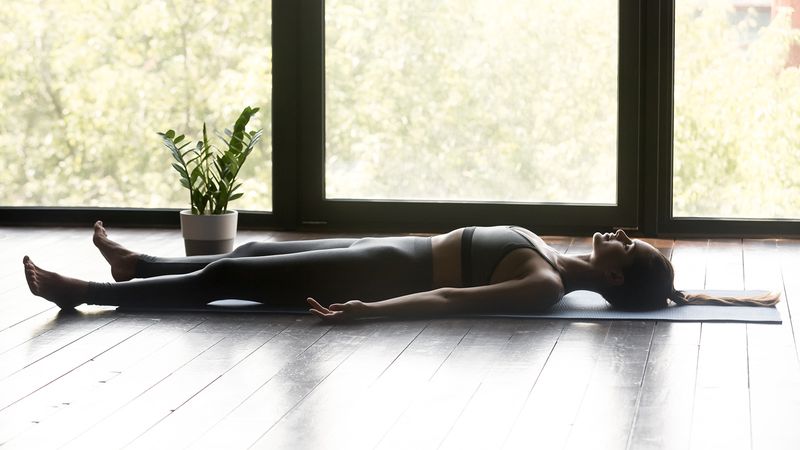
Usually the final resting pose in a yoga session, shavasana is an essential asana that helps reduce anxiety and insomnia. This yoga pose balances the nervous system and helps our body enter a state of calm and ease. It also helps remove emotional blockage. While most yoga poses are created to up-regulate our body, shavasana is a down regulator. Many say that shavasana heightens the awareness current state and motivates us to live fully.
How to do shavasana:
1. Lie down on your back with your hands and legs stretched out, keeping your body in a line.
2. Keep your hands and legs slightly apart and your feet and knees completely relaxed.
3. Place your hands at your sides on the floor, palms open and facing upward.
4. Feet and toes should be rolled out.
5. Now close your eyes and gradually relax your body while breathing slowly and deeply.
6. Observe the changes in the body and mind, and breathe.
7. Wait for five to 10 minutes or until you feel completely relaxed and then gently roll on to the right side making your way up into a seated position.
PRO TIPEach of these five yoga poses need to be practiced on an empty stomach, preferably in the morning |
In case you find the text instructions a little confusing, here's an easy-to-follow yoga tutorial where Shetty shares three yogasanas to help reset body and mind, and feel better fast.


